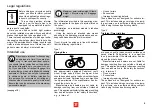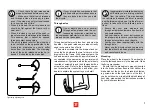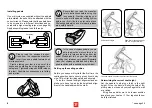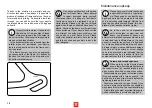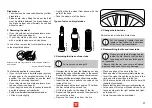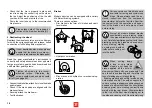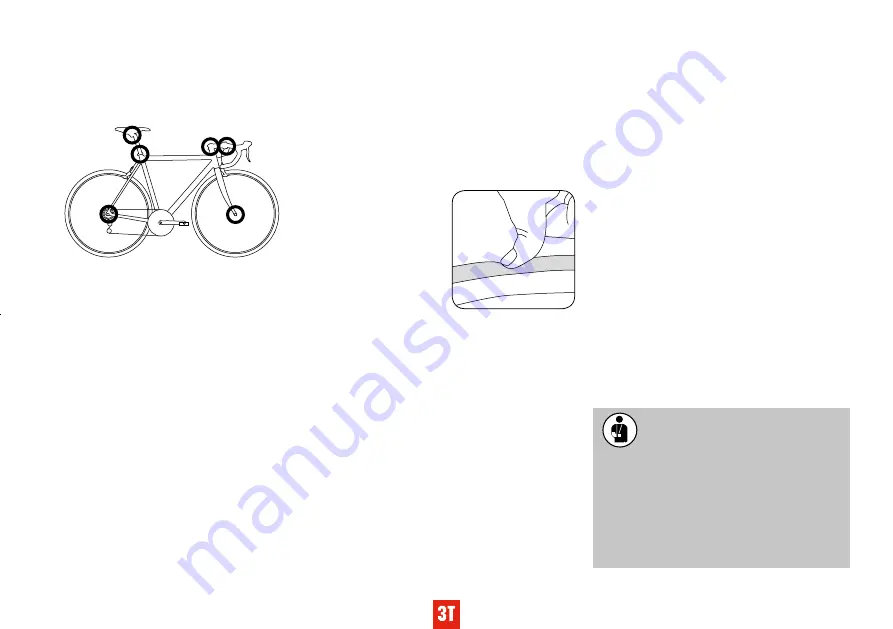
3
If you are unsure of whether your bi-
cycle is in a sound technical condi-
tion, take it to a specialist retailer to
be checked instead of riding it!
It is particularly important if you use your bi-
cycle a lot, either through sports riding or daily
use, that you regularly have all the important
parts checked by a specialist retailer.
Frame and fork, suspension components
and other parts relevant to your safety such
as brakes and wheels are subject to heavy
Ensure that the wheels are securely fastened in
the frame and fork. Check that the quick release
skewers, through axles and all important nuts
and bolts are secure (see page 6 and page 26).
Possible positions of quick release skewers, through axles and
screw connections
Lift your bicycle up slightly and drop it onto the
ground from about 10 cm in the air. If it rattles
or makes another unusual noise, please ask a
specialist retailer to identify and fix the problem
before you ride.
Push the wheels forwards with the brakes
pulled. The back brake should completely pre-
vent the back wheel from moving, while the
front brake should lift the back wheel off the
ground with its braking effect. Please take an
initial test ride in a safe place where you can
familiarise yourself with the new brakes! Mod
-
ern brakes can behave completely different
under braking than those that you are perhaps
used to. The bicycle‘s steering should not rattle
under braking or exhibit any play.
Check the air pressure in the tires. You will find
instructions as to the correct tire pressures on
the sides of the tires. Please adhere to the re-
quired minimum and maximum pressure! Where
no pressure values have been stated, 6.5 bar
/ 94 PSI are deemed to be a suitable pressure
for racing bicycles. Cyclocrosser tires may be
pumped up to 3 – 4 bar / 43.5 – 58 PSI.
As a general rule of thumb, when you are
out on a ride, you can
check the tire pressure
by doing the following:
If you place your thumb
on a pumped up tire,
you should not be able
to significantly change
its shape by applying
pressure.
Check the tires and rims. Scan them for any
damage, cracks or deformations, as well as embed
-
ded particles, e.g. shards of glass or sharp stones.
If you should find any cuts, rips or holes,
please refrain from riding! First have your bicycle
checked over by a specialist.
Before each ride
Before every ride, please check that:
• The brakes are working safely and are prop-
erly secured
•
The cables and fittings are not leaking, if you
have a model with hydraulic brakes
• The tires are free of foreign objects and dam-
age, and the rims are not damaged and run
true, particularly after riding off road
•
The tires have a sufficient tread depth
• The suspension components are working
properly and are safely secured
•
The screws, nuts, through axles and quick re
-
leases are firmely placed (see page 6 and 26).
• There are no deformations or cracks on the
frame and fork.
•
The handlebars, stem, seat post and seat are
both correctly and securely fastened as well as
set up in the right position
• The seat post and seat are secure. Try turning
the seat or tipping it upwards or downwards. It
should not move.
•
If you are using clipless/magnet pedals, please
check that they are working properly. The ped-
als should release easily and smoothly.
Summary of Contents for Exploro
Page 40: ...3T BIKE ...









